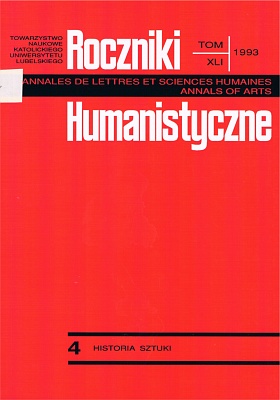The Ideological Contents of the Side Walles of the Wawel Tombs from the Range of Medieval Royal Iconography
Abstract
The Wawel necropolis makes it possible to get to know the thought about life and death as it is expressed in sepulchral art. On the basis of four medieval royal tombs from the Cracow cathedral, especially on the basis of the side walls, it is possible to read out the thought about the structure of the State and its medieval ideology.
The compositional and iconographic changes in the sculptural ornamentation of the side walls of the tomb of Vladislav Lokietek, Casimir the Great, Vladislav Jagiello and Casimir Jagiellonian reveals the transformations in the thought about the State in Poland. On the first tomb there are funeral festivities which present the thought defined as res patrimoniales describing the State as the property of the sovereign.
The side walls of Casimir the Great’s tomb depict the notables of the royal council at a sitting. This is connected with a new conception of the State called Corona Regni, which separates the sovereign from his office and imposes some judicial limits on his authority. The presentations on Vladislav Jagiello’s side walls draw on to the same conception; the kingdom here is depicted as the federation of lands with the royal person as the keystone of the whole construction.
The last tomb depicts the origins of the class State. The mourners on the sides of the sarcophagus represent all four classes. In the sculptural decoration of this tomb one may clearly notice some drawing on to the Sate conceptions created in the fifteenth century at Cracow University.
Copyright (c) 1993 Roczniki Humanistyczne

This work is licensed under a Creative Commons Attribution-NonCommercial-NoDerivatives 4.0 International License.





